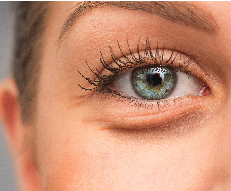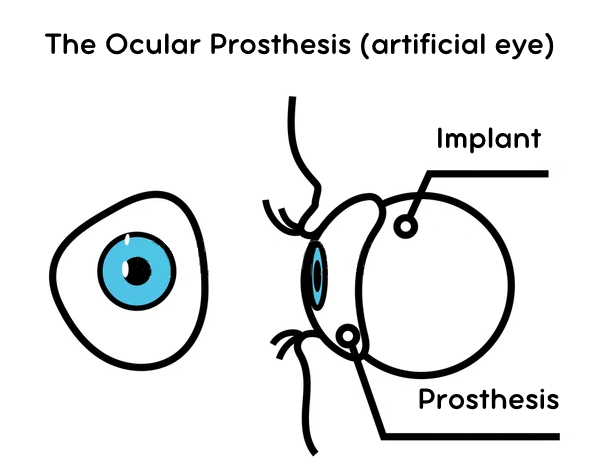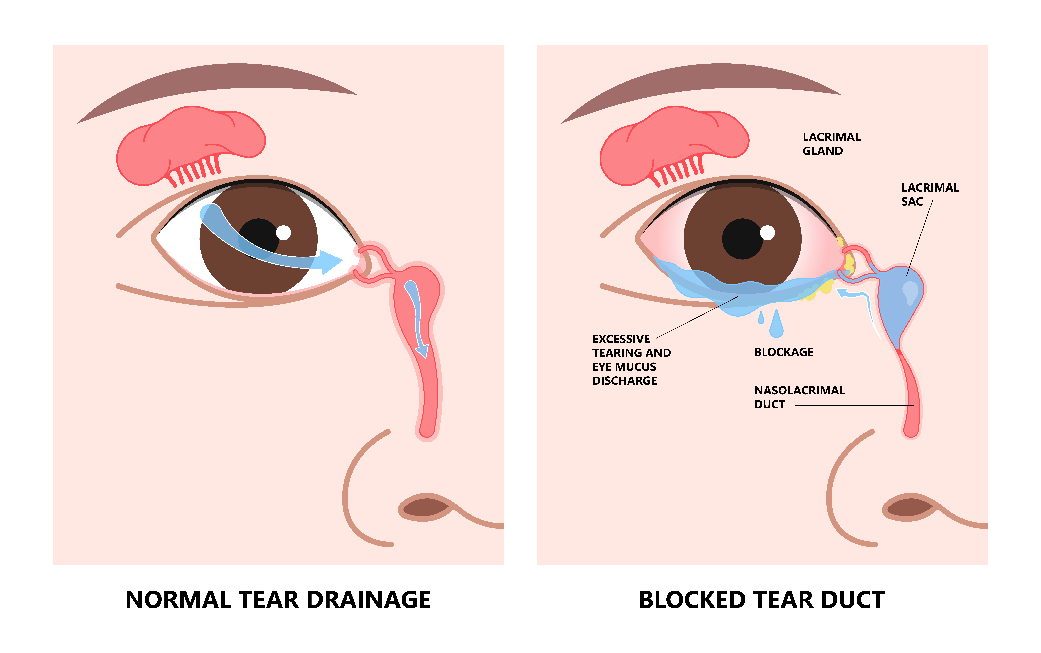
1- Blepharoplasty Eyelids Deformities and Correction Surgery

Eyelid Aesthetic Surgery (blepharoplasty) is cosmetic surgery to remove excess skin or fat from the Upper and Lower eyelids. The goal is to heal deformed or drooping eyelids or eye bags.
An eyelid lift or blepharoplasty is a procedure to add or remove oil from your skin and eyelids. The term “eyelid lift” is a misnomer because the eyelid is not fully lifted during surgery.
Upper eyelid blepharoplasty focuses on the area between the eyebrows and eyelashes. Lower eyelid blepharoplasty focuses on the area between the eyelashes and cheek. In essence, a blepharoplasty procedure is about removing excess skin and muscle from these areas and reducing or repositioning the underlying fat to a younger configuration.
For more information please click here…
Eyelids Deformities
Ptosis is the drooping of the upper eyelid over the eye. The eyelid may droop more or less to cover the pupil. Ptosis can limit or even completely prevent normal vision. Ptosis is seen in children and adults.
For more information please click here…

Entropion and Ectropion
Eyelid deformities are divided into Entropion and Ectropion. Entropion and Ectropion are conditions that affect your eyelid. Definition of Entropion: A deformity in which your eyelid turns inward, causing your eyelashes to rub against the cornea (the clear outer layer at the front of your eye). The definition of ectropion is a deformity in which your eyelid droops outward or downward. The eyelashes of patients with ectropion do not touch the cornea.
For more information please click here…
2- Squint Surgery
What is Strabismus (Squint) ?

Strabismus, or Crossed Eye or Squint, as it is known, occurs with involuntary shifting of the eye. Especially Strabismus is a condition where the eyes are in the wrong position andlook towards different points. While one of the eyes is looking straight ahead, the other is looking outward, inward, or down. Wrong position may be obvious all the time, or it may appear in some directions. Also, extra ocular muscle Crossed Eye Surgery is performing to correct strabismus. Particularly, in strabismus, there is a shift of any of the eyes in the horizontal, vertical, or Torsion direction and can affect children or adults.
For more information please click here…
3- Blocked Tear Duct – DCR Surgery
What is the blocked tear duct?
The tear fluid produced by the lacrimal sac is conveyed to the nasal cavity through the tear ducts. Especially, a blocked tear duct occurs when the passage ducts on the nose cannot properly drain tear fluid from your eyes. Therefore when you have a blocked tear duct, you may have itchy, irritated, or watery eyes. In order to solve this unpleasant problem you can have blocked tear duct surgery. Sometimes babies are born with blocked tear ducts and do not usually need treatment as they open on their own. In adults, a blocked tear duct may heal on its own or you may need blocked tear duct surgery. With treatment, most people experience complete relief from symptoms.
4- Pterygium Surgery.
 A Pterygium is an outgrowth of the conjunctiva, or mucousmembrane, that covers the white part of your eye on the cornea. The cornea is the clear front covering of the eye. Generally, this benign or non-cancerous growth is usually shaped like a wing. Usually, Pterygium isn’t a problem or requires treatment. Also, if it’s affecting your vision. Therefore, It can be a problem and you should have Pterygium Surgery.
A Pterygium is an outgrowth of the conjunctiva, or mucousmembrane, that covers the white part of your eye on the cornea. The cornea is the clear front covering of the eye. Generally, this benign or non-cancerous growth is usually shaped like a wing. Usually, Pterygium isn’t a problem or requires treatment. Also, if it’s affecting your vision. Therefore, It can be a problem and you should have Pterygium Surgery.
What is the reason of this?
Particularly, the exact cause of pterygium is unknown. One explanation is that too much exposure to ultraviolet (UV) light can lead to these growths. However, it is more common in people who live in hot climates and spend a lot of time outdoors in sunny or windy environments. People whose eyes are regularly expose to certain elements are at higher risk of developing this condition.
For more information please click here…
5- Vitrectomy Surgery
What is vitrectomy?
 Vitrectomy is a type of eye surgery performed to treat various problems with the retina and vitreous. During surgery, your surgeon removes the vitreous and replaces it with another solution. Especially, the vitreous is a gel-like substance that fills the middle of your eye.
Vitrectomy is a type of eye surgery performed to treat various problems with the retina and vitreous. During surgery, your surgeon removes the vitreous and replaces it with another solution. Especially, the vitreous is a gel-like substance that fills the middle of your eye.
Also, the retina is a layer of cells at the back of your eye. Particularly, these cells use light to send visual information to your brain. Normally, the vitreous should be transparent so that light can pass through your eye and reach your retina.
Especially, some problems can cause blood and debris to block this light. Scar tissue in your vitreous can also dislocate or tear your retina. Therefore, all this can distort the view. Surgeons sometimes perform a vitrectomy for a detached retina. Generally, removing the vitreous provides better access to your retina and reduces tension on your retina.
For more information please click here…
6- Glaucoma Eye Disease and Treatments
Glaucoma
Especially, Glaucoma Eye Disease is a very important and insidious eye condition that damages the optic nerve. Which is vital for your eye health and good vision. Usually, this damage is cause by abnormally high pressure in your eye.
Particularly, Glaucoma Eye Disease is one of the leading causes of blindness in people over 60. However, it can occur at any age, but is more common in older adults. Also, many forms of glaucoma have no warning signs.Therefore, the effect is so gradual that you may not notice a change in vision until the condition is advance.
Because vision loss due to glaucoma eye disease cannot be compensate. Therefore, it is important to have regular eye exams that include measurements of your eye pressure so that it can be diagnose in its early stages and treat appropriately. Vision loss can be slow or prevent if glaucoma is detect early stage. If you have glaucoma, you will usually need treatment for the rest of your life.
For more information please click here…
7- Evisceration and Enucleation
What are Enucleation and Evisceration?

Especially, Enucleation and Evisceration are terms of Prosthetic Eye Surgery that refer to surgery to remove the eye from the eye socket or orbit for the ocular prosthesis (artificialeye). Enucleation is the surgical removal of the entire eyeball, leaving behind the lining of the eyelids and eye muscles. Evisceration removes only the contents of the eye, leaving the white part of the eye (sclera) and eye muscles intact.
For more information please click here…
In Evisceration or Enucleation surgery
It is necessary to prepare the prosthesis before placing the prosthesis in the empty eye socket. Orbital implants and ocular molds place inside the eye are use to adapt to the tissue surrounding the eye to prepare the eye socket. Especially, the two-part orbital implant and ocular prosthesis system provides a stable and well-tolerated aesthetic restoration of the eye socket. By placing the orbital implant and ocular prosthesis, a natural appearance can be obtained even if vision cannot be achieved by removing the eye.
For more information please click here…
8- Keratoplasty Surgery

Keratoplasty surgery, in medical terms, is a very delicate surgical procedure to replace the upper part of your cornea with corneal tissue from a donor. The cornea is the transparent, dome-shaped layer that covers the upper part of your eye. Also, it is the first layer that light or image passes through your eye and plays an important and major role in your eye’s clear vision.
Moreover, a successful corneal transplant can restore your eyesight, reduce the pain caused by the cornea in your eye, and improve the appearance of a damaged or diseased eye.
Especially, most corneal transplant procedures are successful. However, a corneal transplant carries a small risk of complications, such as rejection of the donor cornea.
Particularly, a corneal transplant is most often performed to restore vision to a patient with a damaged cornea. A corneal transplant can also alleviate the signs and symptoms associated with corneal diseases.
For more information please click here…
9- Uveal Melanoma Eye Cancer Treatment

Uveal Melanoma is a type of Eye Cancer that develops in cells that produce melanin, the pigment that gives your skin its color. your eyes too has melanin-producing cells and candevelop melanoma. Eye melanoma is also called Ocular Melanoma.
Most eye melanomas occur in the part of the eye that you cannot see when you look in the mirror. This makes eye melanoma difficult to detect. In addition, eye melanoma does not typically cause any early signs or symptoms.
Treatment is available for eye melanomas. Treatment of some small eye melanomas may not affect your vision. However, treatment of large eye melanomas typically results in some vision loss.
For more information please click here…
10- Retinitis Pigmentosa Treatment
Especially, Retinitis Pigmentosa (Night blindness) is an eye disease that is seen in every 4000 people due to the inherited retina. Particularly, Retinitis Pigmentosa diseaseaffectstheretina of our eye. Generally, the retina is the nerve layer that lines the back of the eye that is sensitive to light. Also, This is a slowly progressive disease and causes a definite loss of vision in its later stages.
What causes Retinitis Pigmentosa?
Additionally, Retinitis Pigmentosa is part of a family of inherit eye diseases. Also, all types of the disease affect the retina’s ability to perceive light. Therefore, the problem with the retina can occur in any of the following:
- Rod cells.
- Cone cells.
- The connection between the cells that make up the retina.

What are the symptoms?
Especially, Retinitis Pigmentosa symptoms usually begin in childhood or adolescence. However, each patient may experience symptoms differently. Particularly, in some people the disease progresses slowly and causes severe vision loss over time. However, in some patients, they lose their sight much faster and more severely.
Early diagnosis and Treatment of Retinitis pigmentosa
Especially, with the diagnosis of RP disease, the progression of the disease can be stop or slow down. Also, it is possible with subtenon PRP (platelet rich plasma) or the Wharton jelly Stem cell treatment apply to the patients in this situation. Particularly, the aim of this treatment is to slow or stop the progression of retinitis pigmentosa disease treat with PRP or Wharton’s jelly-derived mesenchymal stem cells.
Moreover, treatment with Wharton’s jelly-derived mesenchymal stem cells in the early stages is considered an effective and safe option to slow or stop the progression of disease without any adverse effects.
Especially, if you suspect that you have Retinitis Pigmentosa, we recommend that you see a retinal specialist ophthalmologist as soon as possible. Also, you can get information about the treatment of the disease by applying us and book for appointment for an examination from our specialist eye doctor.
For more information please click here…
11- Diabetic Retinopathy Treatment
Symptoms
In the early stages of diabetic retinopathy, you may not have symptoms. As the condition progresses, you may develop:
- Floating spots or dark bands (flyers) in your vision.
- Blurred vision.
- Wavy vision.
- Dark or blank areas in your vision.
- Vision loss.
12- Age Macular Degeneration (AMD) Treatment
What is macular degeneration?
Wet macular degeneration does not affect peripheral vision but can cause significant central vision loss.
Age-related Macular Degeneration (AMD) is a chronic eye disease that affects the part of the retina responsible for your central vision (the macula). The disease is one of the most common causes of vision loss in older adults. The disease typically causes “blurry” or “distorted” vision or a blind spot in the center of your visual field. It does not affect your side (peripheral) vision.
Age Macular Degeneration is one of the two types of disease. The other type – dry macular degeneration – is more common and less severe. Affecting only 10 to 15 percent of those with macular degeneration, the wet type always starts out as the dry type.
Especially, if you notice any changes in your vision, see an eye doctor regularly and as soon as possible. Also wet AMD can occur suddenly and progress rapidly. Therefore, treatment can help slow vision loss and maintain independence.




 Türkçe
Türkçe




